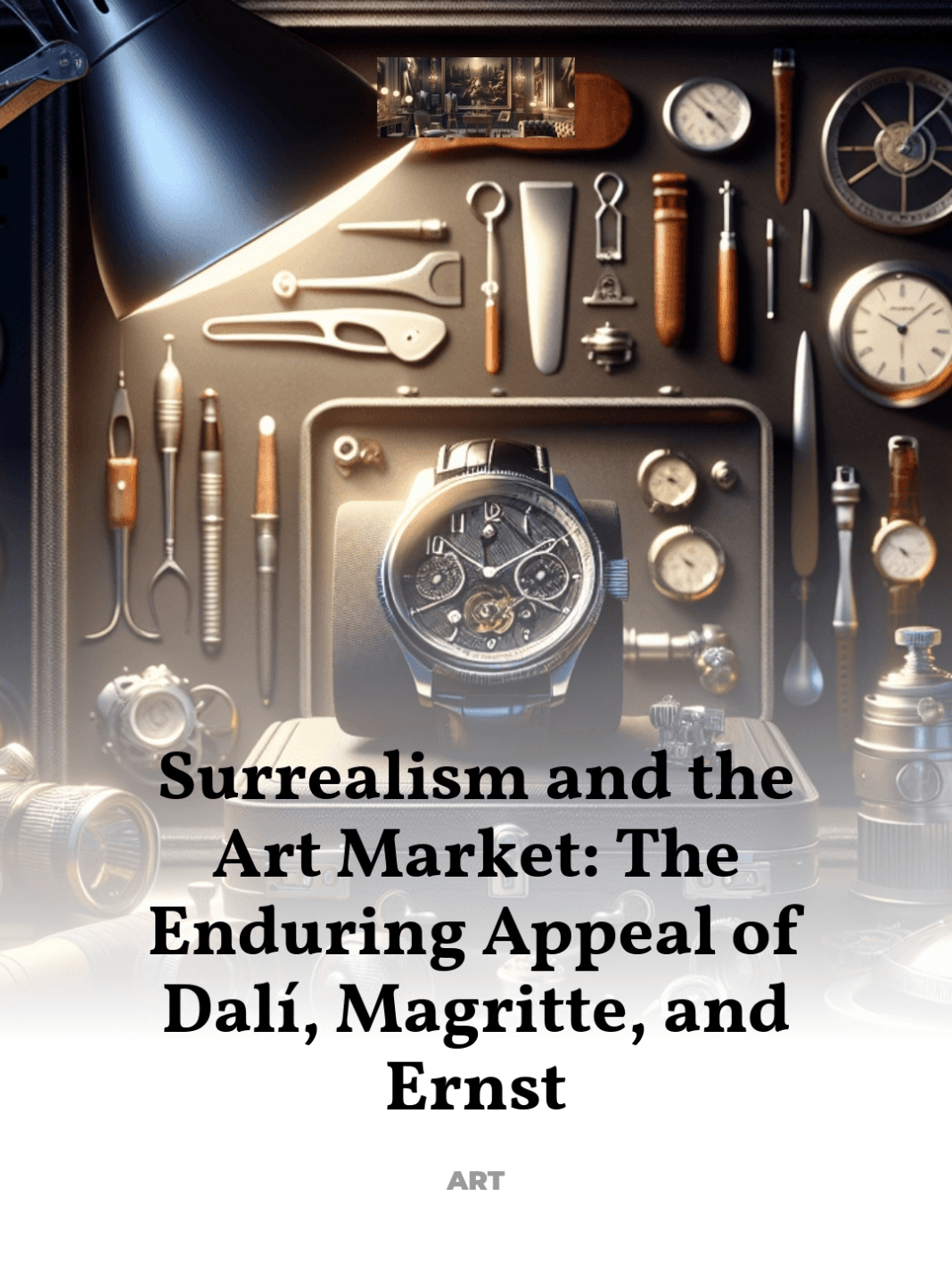How Dreamlike Visions Became High-Value Investments
The enigmatic allure of Surrealism continues to captivate the art market, with masterpieces by Salvador Dalí, René Magritte, and Max Ernst commanding both awe and exceptional valuations.
- Surrealism: A Revolutionary Movement in Art
- Salvador Dalí: The Icon of Surrealism
- René Magritte: The Enigmatic Visionary
- Max Ernst: Innovator of the Surreal Craft
- Surrealism in the Contemporary Art Market
- Cultural Significance of Surrealist Art
Surrealism: A Revolutionary Movement in Art
Surrealism emerged in the early 1920s as a cultural movement that sought to release the creative potential of the unconscious mind. Founded by André Breton in Paris, it was both a literary and artistic movement. The surrealists rejected the rational world, instead delving into the chaos of the subconscious, influenced heavily by the theories of Sigmund Freud. Artists like Salvador Dalí, René Magritte, and Max Ernst transcended traditional art forms to explore dreams, juxtaposition, and the illogical; their works created a seismic impact on the art world that reverberates in today’s market.
Salvador Dalí: The Icon of Surrealism
Salvador Dalí, known for his striking and bizarre images, remains one of the most prominent figures of the Surrealist movement. His most famous piece, The Persistence of Memory (1931), with its soft, melting pocket watches, challenges our perceptions of solidity and reality. Dalí’s genius lies in his meticulous craftsmanship and the layered symbolism in his work, which draws heavily on Freudian themes of desire and repression.
- Technique and Craftsmanship: Dalí’s use of the paranoiac-critical method, a technique intended to break down the rational mind and cultivate the irrational, was revolutionary. His precise painting style, developed from influences as varied as Renaissance art to contemporary cinema, allowed him to depict dreamlike scenes with photographic realism.
- Market Appeal: Today, Dalí’s works are among the most coveted in the Surrealist market. His masterpieces do not merely hang in collectors’ private galleries but are also perennial favorites in museums, drawing crowds who wish to delve into the layers of his vivid dreamscapes.
René Magritte: The Enigmatic Visionary
René Magritte is celebrated for his witty and thought-provoking images. Employing familiar objects in an unusual context, his work challenges observers’ preconditioned perceptions of reality. His iconic piece, The Treachery of Images (1929), famously depicts a pipe with the caption, “This is not a pipe,” highlighting the illusion of art.
- Artistic Themes: Magritte’s work often combines the mundane with the surreal, forcing the viewer to question their reality and tap into their subconscious. His technique of creating what he called “elective affinities” puts together elements that are not usually associated with each other, creating a surreal yet harmonious whole.
- Impact on the Art Market: Magritte’s art continues to influence contemporary artists and remains highly valuable. His approach to Surrealism, focusing on evoking mystery rather than shock, renders his art both accessible and profoundly deep, ensuring its place in both historical and modern collections.
Max Ernst: Innovator of the Surreal Craft
Max Ernst was a prolific artist and sculptor known for his novel techniques and the diversity of his works. Ernst’s experimentation with different media, including painting, collage, and frottage (a method of creating textures), set him apart from his contemporaries.
- Innovative Techniques: Ernst’s frottage technique, for instance, involved making rubbings of objects to create a new texture. His works blur the line between reality and fantasy, often creating a disorienting effect that is both captivating and unsettling.
- Relevance in Today’s Market: Ernst’s ability to innovate and his broad influence across Europe and America make his works highly sought after. His pieces not only fetch high prices at auctions but also continue to influence modern art, from abstract expressionism to contemporary multimedia art.
Surrealism in the Contemporary Art Market
The market for Surrealist art has seen robust growth, with works by Dalí, Magritte, and Ernst achieving record-breaking sales at auctions. The enduring appeal of Surrealism in the art market can be attributed to its profound impact on visual culture and its ability to resonate with contemporary themes of fantasy and reality.
Cultural Significance of Surrealist Art
Surrealist art transcends mere aesthetic appeal to engage with deep philosophical questions about reality, perception, and the human condition. The works of Dalí, Magritte, and Ernst offer not only visual delight but also intellectual engagement. They challenge viewers to see the world anew—a quality that ensures their lasting value and relevance.
For further exploration of Surrealist art, consider visiting major retrospectives at institutions like the Museum of Modern Art (MoMA) in New York or the Centre Pompidou in Paris. These venues provide profound insights into the works of these master Surrealists.



